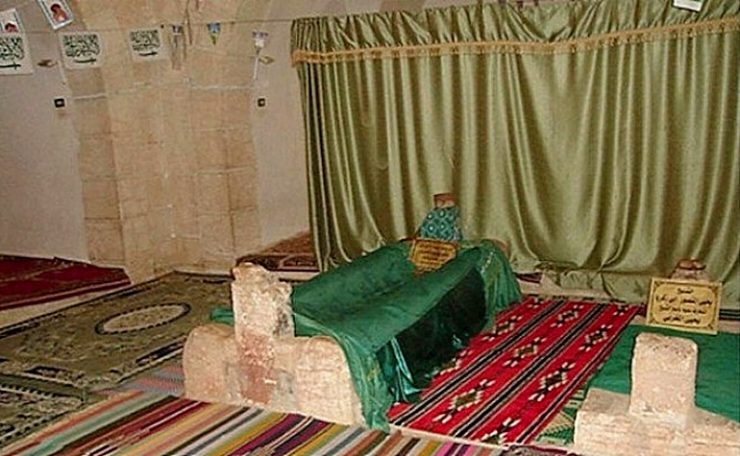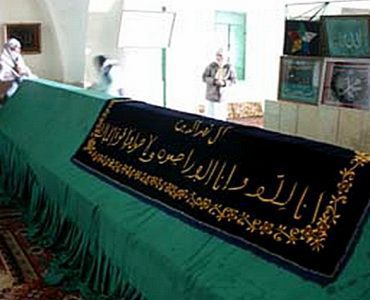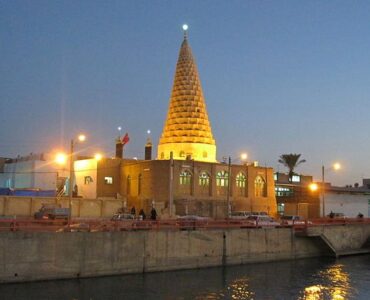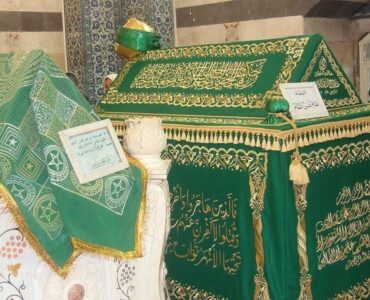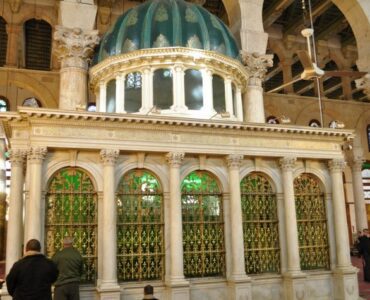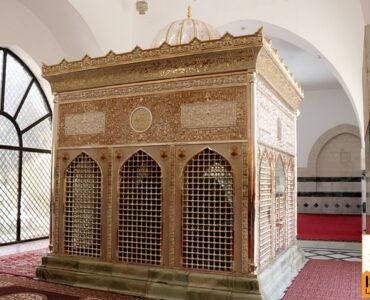This is the tomb of Umar bin Abdul-Aziz, the eighth Umayyad Caliph who ruled from 99-101 AH. Muslims historians agree that he was a just and devout ruler, compassionate, caring and beloved by his people. He was also a Tabiee (companion of the companions of the Holy Prophet). His tomb has recently been desecrated.
- Aslam (رضي الله عنه) narrates that he was once accompanying Umar bin Al-Khattab (رضي الله عنه) on his patrol of Madinah at night, it so happened that he leaned against a wall to rest when he felt tired. It was midnight, and we heard a woman say to her daughter, “O my daughter, get up and mix that milk with some water.”
The girl said, “O mother, did you not hear the decree of Amir Al-Mu’minin (chief of the believers) today?”
The mother said, “What was that?”
The girl, “He ordered someone to announce in a loud voice that milk should not be mixed with water.”
The mother, “Get up and mix the milk with water; you are in a place where Umar cannot see you.”
The girl told her mother, “I cannot obey Him (Allah) in public and disobey Him in private.”
Umar heard this, and told me: “O Aslam, go to that place and see who that girl is, and to whom she was speaking, and whether she has a husband.” So I went to that place, and I saw that she was unmarried, the other woman was her mother, and neither of them had a husband. - I came to Umar and told him what I had found out. He called his sons together, and said to them: “Do any of you need a wife, so I can arrange the marriage for you? If I had the desire to get married, I would have been the first one to marry this young woman.”
Abdullah said: “I have a wife.” Abdur-Rahman said: “I have a wife.” ‘Asim said: “I do not have a wife, so let me marry her.” So Umar arranged for her to be married to ‘Asim. The woman gave birth to a daughter (named Fatima), who grew up to be the mother of Umar bin Abdul-Aziz.
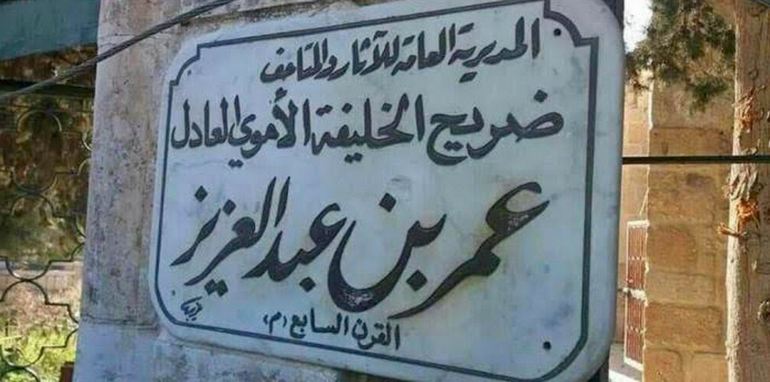

- Umar bin Abdul Aziz was extremely pious and disdainful of worldly luxuries. He preferred simplicity to the extravagance that had become a hallmark of the Umayyad lifestyle, depositing all assets and finery meant for the caliph into the public treasury. He abandoned the Khalifal palace and instead preferred to live in modest dwellings. He wore rough linens instead of royal robes, and often went unrecognised.
- Though he had the people’s overwhelming support, he publicly encouraged them to elect someone else if they were not satisfied with him (an offer no one ever took him up on). Umar confiscated the estates seized by Umayyad officials and redistributed them to the people, while making it a personal goal to attend to the needs of every person in his empire. Fearful of being tempted into bribery, he rarely accepted gifts, and when he did he promptly deposited them in the public treasury. He even pressured his own wife – who had been daughter, sister and wife to three separate caliphs – to donate her jewellery to the public treasury.
- While Umar’s reign was very short, he is very highly regarded in both Shi’a and Sunni Muslim memory. Indeed, he is considered one of the finest rulers in Muslim History, second only to the Four Rightly Guided Caliphs, and is affectionately referred to by some as the Fifth and last Rightly Guided Caliph.
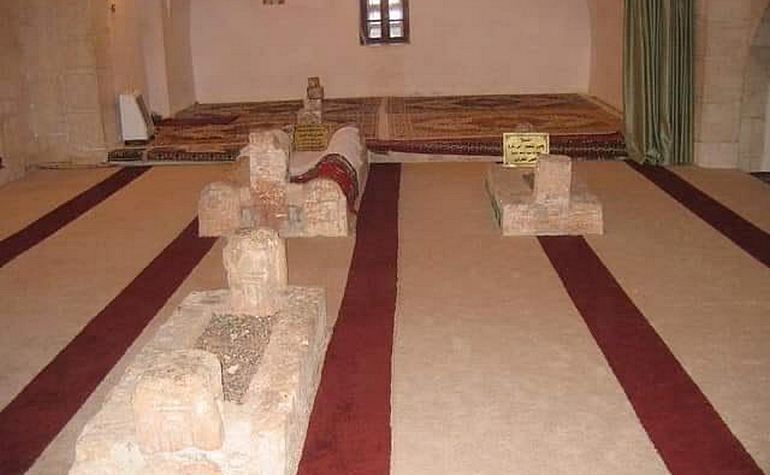

- According to most historians, Caliph Umar died in Aleppo, Syria, on the 5th or 6th of Rajab, 101 AH. (some have mentioned the 20th) when he 39 or 40 years old. He was buried in Dair Siman in a plot purchased from a Christian.
- The cause of his death is attributed to the reforms he initiated, which greatly angered the Umayyad nobility. It is reported that they bribed a slave of his to administer a deadly poison. The Caliph having felt the effect of the poison sent for the slave and asked him why he had poisoned him. The slave replied that he was given one thousand dinars for the purpose. The Caliph deposited the amount in the public Treasury and freeing the slave asked him to leave the place immediately, lest anyone should kill him.
- He reportedly left behind only 17 dinars with a will that out of this amount the rent of the house in which he died and the price of the land in which he was buried would be paid.
- In January 2020, when pro-Assad forces took the area in the ongoing Syrian civil war, the graves were burnt and desecrated from the outside. In May 2020 video footage emerged which shows what appears to be the emptied graves of Caliph Umar bin Abdul Aziz, his wife Fatima and his servant. The footage was posted on a pro-Assad website, it is not known what became of the bodies. May Allah (ﷻ) elevate the ranks of the deceased and punish the perpetrators of this savage act.
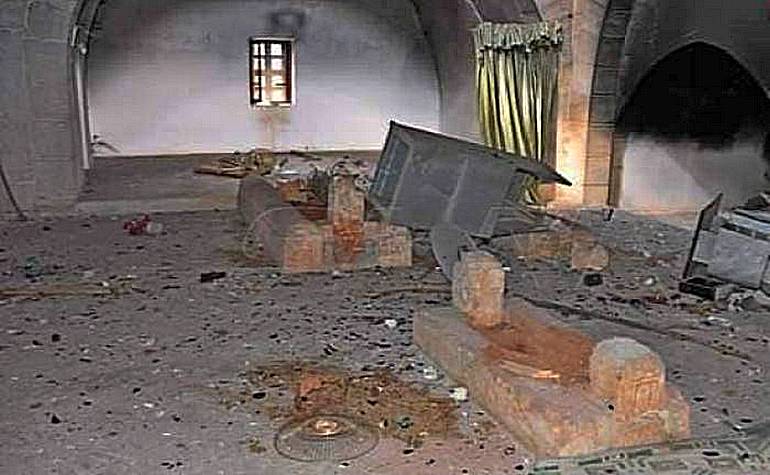

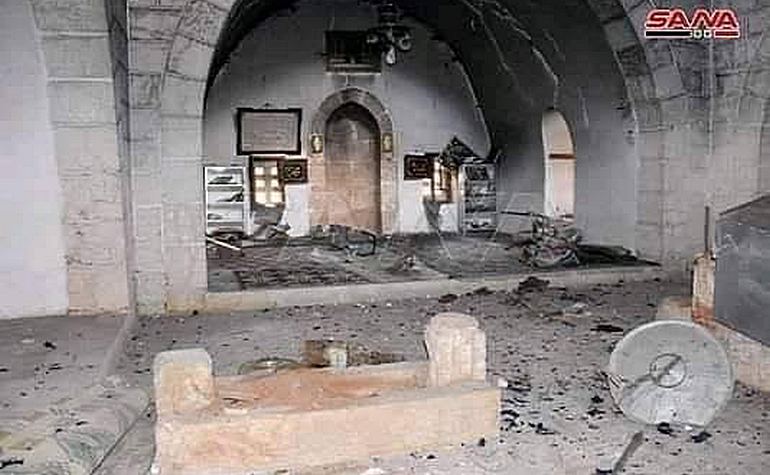

References: Abqari.com, Sifat Al-Safwah
Note that this entry has been shown for information purposes only. On no account should anybody pray to a grave or seek supplication through them as this is tantamount to committing shirk, associating partners with Allah (ﷻ)

